Utkatasana
What is Utkatasana?
Utkatasana is also known as Chair Position, one should not think that the meaning of utkata in Sanskrit means chair. Utkatasana is sometimes converted from Sanskrit to English as “Fierce Seat” or “Powerful Position.” This position is mentioned as the Fierce Position, where Utkata means violent or fierce or severe. This position is called the Chair position because the posture favors a the person sitting on an inappreciable chair. It is a strengthening and heat-building asana that conducts all parts of your body together into a harmonic and powerful whole. Utkatasana’s other names are Explosion Position, Powerful Position, Fierce Position, standing squat.
Utkatasana Pronounced as (OOT-kah-TAHS-ah-nah). This asana is a meditation on determination and persistence, as well as dedication. To successfully perform the Chair Position, you must impeccably unify the strength of the legs, arms, and torso as you raise your core muscles and lengthen your spine.
Utkatasana can look easy—like a yogi sitting in a legendary chair. “When you do the position, therefore, it is certainly not an easy, passive control,”. “A deep squat, Utkatasana immediately attracts the strength of your legs, back, and ankles. Here, power is not about authority or control over someone else so much as it is about positioning with the life energy within and around you. At the core level, Utkatasana educator you how to discover your seat of power within your pelvis, at the center of your body.”
The chair Position requests strength and stamina in the body but also centers on the breath and mind. When you are centered and positioned in the posture, you will feel like you are obtaining a great well of energy. Utkatasana offers an impressive lesson and a key theory in yoga: Steady exercise over time is better than casual, strong course. stability in yoga, and Utkatasana, surrender deep and lasting results.
This position is the second position in the Sun Salutation B ( Surya Namaskar B). It needs enough strength with the quadriceps to help your hips get the right support and give the knees consolation to detain the position for long. Working on the adjustment of the hips, knees, and the pelvic region are necessary to get comfortable in this position. Chair Position Deep Bend (Utkatasana Deep Bend) is a starters variation of Chair Position (Utkatasana).
The chair Position is reviewed as a base position as chair position variations can be obtained from this position. The chair Position helps boost energy in the body and thus can be comprised in flow yoga series.
Chair Position (Utkatasana) is a necessary transit position in Standing Forward Bend Position Chair Position Flow (Uttanasana Utkatasana Vinyasa). Chair Position Standing Forward Bend Position Flow (Utkatasana Uttanasana Vinyasa), Chair Position Downward Facing Dog Position Flow (Vinyasa Utkatasana Adho Mukha Svanasana), Revolved Chair Position Revolved Side Angle Position Flow (Parivrtta Utkatasana Parivrtta Parsvakonasana Vinyasa) and the likes of it. It is an ideal versatile transit position in ashtanga yoga and power yoga series.
What are the Health Benefits of Utkatasana?
Chair Position upgrades balance and can create cardiovascular health and flexibility. It essentially strengthens your core, thighs, and ankles. A chair is a standing squat that arrests the muscles in your buttocks, hips, and thighs. It also arrests your core to stabilize you in the position and works on expanding your balance. It is reviewed as a practical exercise as you help strengthen and balance in conducting everyday tasks, even for obtaining in and out of a real chair. It is also a warming position, which can be helpful in winter.
Stretches, Strengthens, Lengthens :
The position of the hips in this position, extract the weight of the upper body and with exercise, the muscles about the hips, obtain strength giving it a strong look. The whole upper body, shoulders, chest, spine, neck, middle and upper back get stretched in this position, while the lower body acquires power. While the upper body at the hips bends, the lower body extracts some weight off the body in Utkatasana, allowing the knee and the ankle joint the needed pressure. This pressure slowly upgrades the joints and details a competent look. The arms are lifted to give the arms and armpits a stretch and a deep stretch to the intercostal muscles. However, the bending of the knees attaches slight stress to the thighs, quadriceps, hamstrings, and calves. It needs to allowing strength moderately to the full leg. Strengthens the biceps and triceps, inner thighs (adductor muscles), posterior chain (back muscles, butt, hamstrings), hip flexors, quadriceps, and calf muscles. Strengthens and extends gluteus maximus. Strengthens thigh and shin muscles: Those who are considering cellulite-free competent legs would love Utkatasana as its qualities of thigh and lower leg muscles. Tones shoulder and upper arm muscles: However this asana is not a hardcore arm toning practice, it is a good work out for the strength teaching.
Flexibility and Range of Motion/Energizing, De-stressing, Relaxing:
The extending of the spine coupled with the strengthening of the knee and ankle joints assisted with a stable hip increases overall flexibility and betters dexterity. Chair Position (Utkatasana) is a demanding and dynamic position as it supplies an incentive to the movement to many other positions requiring squatting and twisting. Therefore this position is used by yoga teachers for ashtanga yoga and power yoga series. Reduces stress and expands mental strength.
Chest, Diaphragm, and Breath:
The extension of the shoulders conducts an evolution of the chest and helps to increase the flexibility of the diaphragm which upgrades breathing. An aware attempt is required to understand the body’s motion while deep, slow breathing occurs in this position. With the growth of the chest, the breathing betters, therefore, taking care of the immune system. Structuring tolerance here, demanding to hold the position for a longer duration, constructs stamina too. Therefore the overall body gets toned and constructs stamina. Strengthens heart, abdominal organs, and diaphragm.
Awareness and Focus (Concentration)/Alignment and Posture:
To continue in Utkatasana, the strength of the muscles plays a great role in bettering the balance of the body. To continue in balance and focus play a considerable role here. Generate a good balance between mind and body. Balances the body and conducts resolution in the mind. Balance and center go hand in hand, and Utkatasana is physically and mentally demanding. The slight neck bend with the arms enlarged above the head, and the Gaze (Dhristhi) on the palms increases focus. The champion has to advisedly half squat and keep in mind not to consume the shoulders. Also, the leg adjustment of the knees, ankles, and heels in one straight the line is required to circumvent injury to the knees and hyperextension of the lower back. If this position is a great musculoskeletal toner, it can also be defacing if the adjustment is wrong. The spinal flexibility and the lower-body toning occasioning in this position amplify the body adjustment and posture.
Cures flat feet: Flat feet are frequently the cause of leg joint pain. Decrease the flat feet. Those who are regarding natural treatment for flat feet may find it very useful. Alleviates back pain that solutions from sitting in one posture for a long time. Rectifies upper body posture: We repeatedly find one another sitting in a stooping posture. This is dangerous to the spine and causes back pain. The methodical exercise of Utkatasana needs posture adjustment.
Stimulation and Organs/Circulation and Systems:
Utkatasana tones the core muscles by securing the abdominal muscles while holding the position. Generating a tummy tuck while conducting the navel close to the spine tightens the abdominal muscles conducting strength and restoring the digestive system. The toning of the muscles in this position necessaries blood circulation. The elongated spine tones the spinal nerves and calms the nervous system. Tonics the abdominal organs and diaphragm.
Therapeutic, Healing, and Ailments :
The abdominal toning acts as a great massage to the digestive organs, and it is sufficient to treat constipation, Ibd (Irritable bowel disorder), lack of hunger, and acidity. The neck stretch tonics the thyroid glands, which balances the thyroxin levels (Hormone accountable for metabolism and health of the bones and joints). Yoga teachers can use this position for postural alteration and strengthening the lower body. The pelvic toning tones the uterus and stimulates the endocrine glands, which successfully enhances the functioning of the ovaries and testes. This position constructively treats menstrual disorders and reproductive adjustments like infertility and erectile condition. The pelvic toning is quality for the health of the prostate glands too.
Balance and Emotions:
Chair Position (Utkatasana) justices the throat chakra with the slight neck stretch and this conducts purity of speech and transmission. It balances the sacral chakra with the pelvic toning and increases originality. The balancing of the reason chakra keeps the particular floored and modest and the operation of the third eye chakra enhances vision, foresight, wisdom, and decision making. This asana is comprehensive and creates a balanced identity.
Others :
This position strengthens the quadriceps, hamstrings, and calves, which are the necessary muscles for most athletes. Therefore can be contemplated as a good position to be added to the systematic formula of stretches for athletes. The tightening of the knees in this position also helps to interest shock, which is a substantial advantage for athletes and runners. This position can be exercised by teens and recruits and yoga, teachers can include this for the core strengthening series.
Preparatory Position:
This position is an energy booster to move to other intense positions like Revolved Chair Position Variation (Parivrtta Utkatasana Variation), Chair Position On Tiptoes (Utkatasana On Tiptoes), Eagle Position (Garudasana), and the likes of it.
Utkatasana is a considerable position in which to exercise Mula Bandha and Uddiyana Bandha which will generate sparkle and also tone the pelvic floor muscles and lower abdomen. Also, in case any of you reading this are part of the horsey set, Mr. Iyengar observes in Light on Yoga, “It is a beneficial position for horsemen.” If you want to add to the benefits of yoga, see our complete adviser to the benefits of yoga, which includes a history of yoga plus the origins of our modern yoga exercise and much more.
What are the Preparatory poses for Utkatasana?
- Tadasana (Mountain Position)
- Urdhva Hastasana (Upward Salute)
- Ardha Uttanasana (Standing Half Forward Bend)
- Vajrasana / Thunderbolt Position
- Garudasana / Eagle Position
- Ashwa Sanchalanasana / Low Lunge Position
- Bhujangasana / Cobra Position
How to Perform Utkatasana?
a step-by-step method to go into Chair Position (Utkatasana) is given below:
As Chair Position (Utkatasana) works on the full-body, it is better to stretch the full body with the exercise of a few rounds of Surya Namaskar (sun salutation).
So start in the Mountain position (Tadasana), taking a few breaths with the evolution of the torso upwards. Conduct the big toes all together, affecting and placing the knees close to each other, stand keeping the upper torso stretched, and aim the chest out.
Conduct a slight gap at your heels while relaxing the arms to your side.
Expire, lower your hips, fold your knees, lean forward, and raise your arms over the head. The arms should be contralateral to each other, palms facing each other. The knees should not go behind your toes. If so, take the hips moderately back and lean forward.
The back of the knees, ankles, and heels should be in one vertical line.
The arms are stretched, conducting them in line with the elbows, shoulders, and hips. The arms and the hips’ adjustment support the full body to hold the position.
Conduct your gaze towards the fingers, looking slightly up and not operating the neck.
Make sure you are comfortable, securing the shoulders are not crunched near the ears, the knees together, thighs almost contralateral to the ground, chest out, tummy attracted in, tail bone inserted in slightly, hips operating towards the ground/ mat.
Once agreeable, conduct the gaze upwards and a slight neck fold and with slow deep breathing, go deep into the position with every
expire. Hold here for around eight breaths or more.
With every inspiration, release the body without exchanging the posture, and with every expire, go deep, push the hips out and increase the arms.
The most main thing to recollect here while securities the posture is, issuing the body’s weight equally. If the knees start to hurt and shiver, then watch for the adjustment of the hips. The body’s weight should not fall at the knees and should be equally dispensed at the hips, thighs, knees, feet, and core.
To release from the position, straighten the knees with inspiration while raising strongly between the arms. Straighten out entirely and permit your arms to endure about by your sides.
Expire out entirely and come to stand in Tadasana. Take a few breaths here, watch the breath, and modify the knee and thigh muscles.
Go back into the position, Utkatasana or Fierce Position, with mindful breathing and watch for the full body’s adjustment. Do as many rounds as you can as per your amplitude without stretching the ankles and knees.
How to Perform Utkatasana by Watching a Video?
What are Follow up poses for Utkatasana?
- Uttanasana (Standing Forward Bend)
- Setu Bandha Sarvangasana (Bridge Position)
- Bhujangasana (Cobra Position)
- Adho Mukha Svanasana (Downward-Facing Dog position)
- Uttanasana / Forward Fold Position
- Balasana / Child’s Position
- Tadasana / Mountain Position
What are the Beginners tips in Utkatasana?
- Think through compressing your legs in conjunction as if they are one to make them stronger. You can use a block or rotate up towel to exercise this – envision you are compressing it and also demanding to shoot it out beyond you as you interior rotate the thighs.
- Although, you can also conduct your feet broad apart to make your bottom a little more secure if you need to Press firmly through the feet to generate more raise in the upper body.
- Keep the weight evenly dispersed between the heels and the balls of the feet.
- Exercise the operation in the legs first with your hands on your hips or the back of a (strong) chair for support.
- Exercising with your feet altogether will help awaken your inner-thigh muscles, but if you are feeling unstable, try trampling your feet hip-width apart. You can also compress a block between the thighs to capture the adductors.
What is the Breath Awareness in Utkatasana?
- Inspire and Expire: Standing in Tadasana, inspire and expire for a few rounds.
- Expire: bend the knees and conduct the hip out pushing the thighs downwards and lifting the arms and stretching.
- Expire: As you exhale gaze upwards at the fingers.
- Inspire and Expire: Start to inspire and expire while in the position. With every inspiration, loosen the body, and with every expire take the tail bone out, thrusting the hips down and stretching the arms out to the maximum.
- Inspire: Conduct the arms down delivering from the position.
- Expire: Deliver the knees and stand straight back in Tadasana.
What are the Variations of Utkatasana?
Utkatasana variations with the base position as Chair Position (Utkatasana).
As students have differing capacities, a given yoga position may be easy for a specific student but hard for another. In such cases, as a yoga teacher you can establish position variations to further challenge a student who is detecting a particular yoga position easy, or introduce an uncomplicated variation of a position for the student who is detecting the main position hard.
Position variations can therefore help your students enlarge and build further dependence on their yoga Exercises no matter what there beginning capability levels are. And this is where your role as a yoga teacher enhances very dominant.
Secure your knees: Double check that they do not come ahead over the line of the toes. You should be intelligent to see the toes. If you have irritation in your shoulders or neck, conduct your arms broad apart and/or lower. They can be directed straight out in anterior of you or down to the ground. Otherwise, you could fold the elbows and point the fingertips upwards. Make sure your lower the belly is drawn back to the spine to secure your lower back. Attempt not to overarch the lumbar spine.
There are so many variations are below:
- Chair Position.
- Rotated Chair Position.
- Half Chair Position.
- Chair Position Airplane Arms.
- Chair Position Arms Forward.
- Revolved Chair Position Variation.
- Revolved Chair Position Easy Stretch.
- Chair Position On Tiptoes.
- Chair Position Downward Facing Dog Position Flow.
- Standing Cat-Cow Position.
- Bear Position.
What are the Types of Utkatasana?
If the shoulders are rigid and not too malleable, then stretching the arms anterior of you in adjustment to the chest, is a greater option rather than lifting it above your chest line.
If stabilizing in this position is a defiance, then using the wall beyond to support the hips, can be different.
Begin with resting the arms on the thighs palms facing down, if the chest and the shoulders are not ready yet. Slowly work from the thighs to the arms in anterior and then to the above hold.
If conducting the knees together is dense on the thighs, keeping the feet at a distance should be a significant way to start with.
Pregnant women should certainly keep their feet and hip distance apart while exercising Utkatasana, for better grip and stability.
If you are new to exercising Utkatasana:
If this position is new to you, or you find it heavy to keep your legs compressing together in the position, begin by exercising it with your feet hip-distance apart. You can also place a yoga block connecting your thighs to help keep your knees directed ahead and strengthen your inner thighs.
You can also exercise the position sitting on a yoga chair and still get many of the benefits of the position. Over time, you can work to conduct your butt off the chair and float for a moment, slowly expanding the length of time you hold yourself off the chair.
If you have a neck injury:
Keep your gaze ahead rather than looking up. Lengthen through all sides of your neck to build strength while exercising Chair Position.
If you have tight or strong shoulders:
Different your hands shoulder-distance apart (as in Urdhva Hastasana). You can take your arms as broad apart here as is compulsory to assist your shoulders. You will also likely want to gaze ahead slightly than look up.
If you have high blood pressure:
Conduct your hands to Anjali Mudra (Prayer Position) in the anterior of your heart, or place your hands on your hips, rather than raising them overhead.
If you cannot get your heels down:
Not start able to get your heels down to the mat in this position is normally a sign of tight calves or tight Achilles tendons. You can use a yoga thrust or bent yoga blanket and place it below your heels so that you have something to press them down into. This will help extend your calf muscles and better your balance.
If your lower back hurts:
You may be comprehensive your lower back in the position. Center on charming your butt muscles (glutes) and inserting your tailbone underneath you slightly, while also toning your belly (Uddiyana Bandha).
What are the Precautions and Contraindications for the Utkatasana?
Recollect that while yoga is for everyone, not all positions are for all people. If your body essentials some extra support in this position, see the Modifications section for ideas on how to do this position safely. Following are the Contraindications of the Chair Position (Utkatasana).
Injury and Surgery:
Chronic knee pain or knee injury will make it difficult to exercise this position. Hence it is best done once entirely restored or with the knees strong enough. Students with shoulder, ankle, and hip injuries should avoid this position because all these joints are active in this position.
Lack of Body-Breath Connections:
Students requiring body-breath relations may hold their breath to stay in the position. This is not qualified for the respiratory pattern, and also, such students may jerk their knees while disposing in the position or delivering it. Yoga teachers need to enlighten them on this in-front exercise.
Physical Strength and Weak Body :
Students with high blood pressure, retain your arms down or in Anjali Mudra (Prayer Position). vertigo or migraine disorders need to avoid this position. Dizziness and imbalance can occur because of the neck fold with arms lifted. This operation creates a slight pressure on the jugular vein and the carotid artery (carotid arteries are a pair of blood vessels discovered on both sides of the neck that deliver blood to the brain. The jugular vein and the main arteries discovered in this area are attached. The jugular vein is one of the several veins in the neck that drains deoxygenated blood away from the face, brain, and neck, replacing it with the heart.) and this generate pressure on the brain and blood vessels for such people. Also, people with weak ankles, knees, and hip joints require to avoid this position to avoid dislocation of joints while delivering the position. Chair Position Variation At Wall (Utkatasana Variation At Wall) and Chair Position On Chair Hands On Knees (Utkatasana On Chair Hands On Knees) are a good alternative for senior citizens and people with weak body frames. Serious arthritis or acute spondylitis will generate more joint pain, and hence this the position is best done slowly with advice or mastery of simpler positions to diminish the injuries in front of exercising this position.
Others:
This position should be circumvented by pregnant women in the third trimester as it is strenuous on the hips and the legs to carry the weight of the womb. Comparably senior citizens lack core and knee strength and this position is not preferable for them. postnatal women still recovering strength in their hips and pelvic joints need to circumvent this position.
Therapy and Restorative:
However this is a knee and body strengthening position, yoga teachers need to evaluate the students’ physical fitness and rule out major spinal disease, knee surgeries, or acute back pain in front exercising. Yoga teachers need to make the students exercise Standing Shoulder Rolls fold Elbows, Seated Knee Rotation, and Standing Ankle Rotation (Tadasana Goolf Chakra) to open up the joints and avoid injuries in the front exercise of Chair Position (Utkatasana).


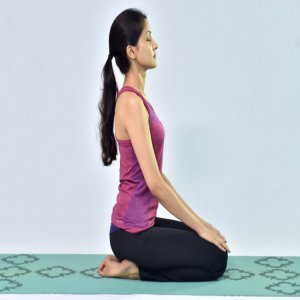
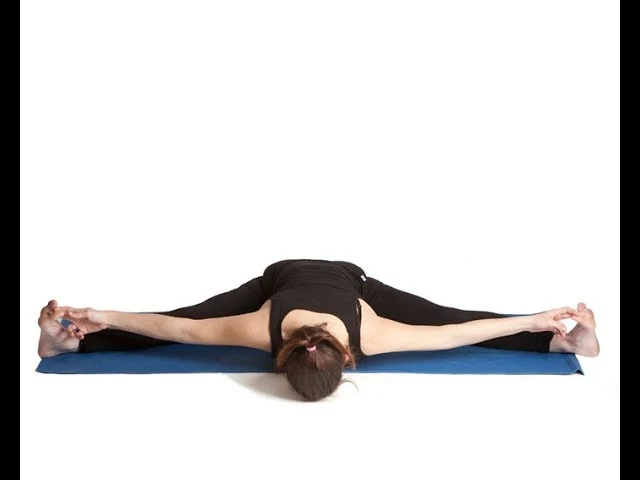
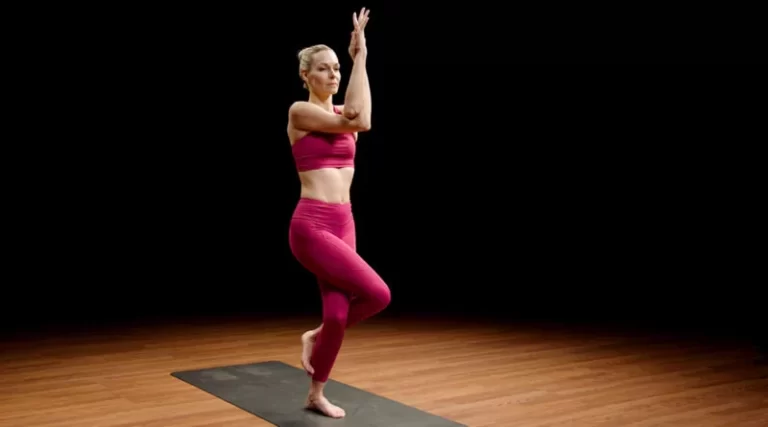
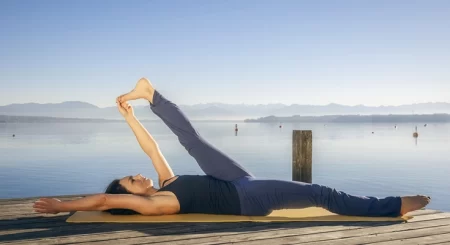
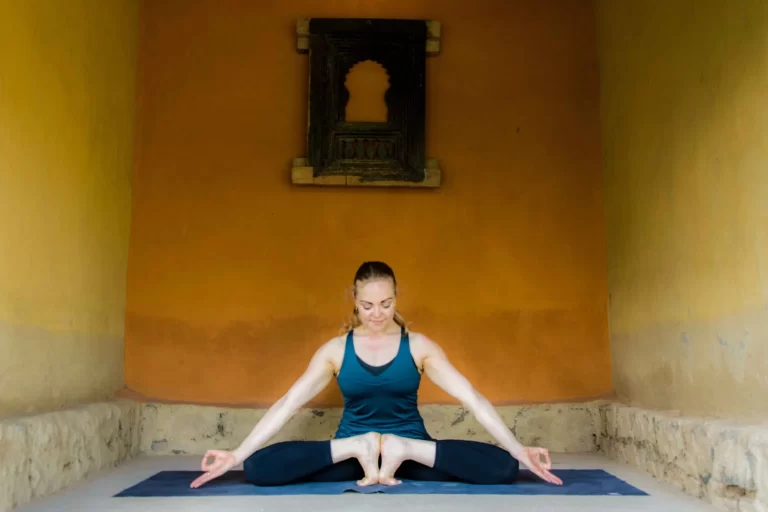
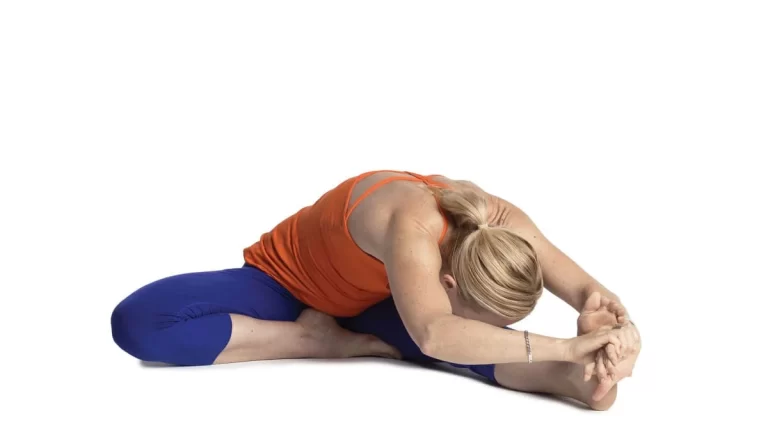
One Comment